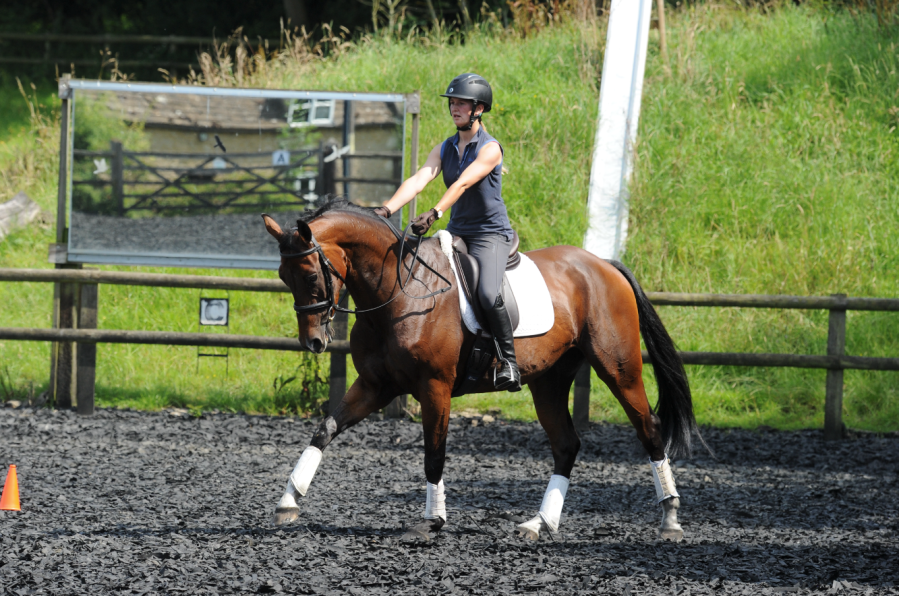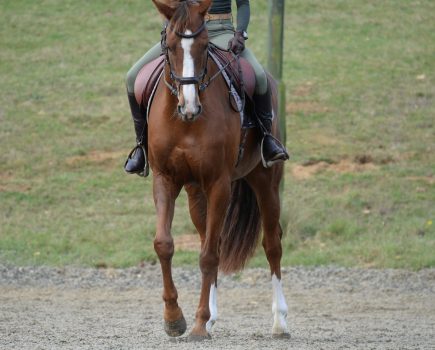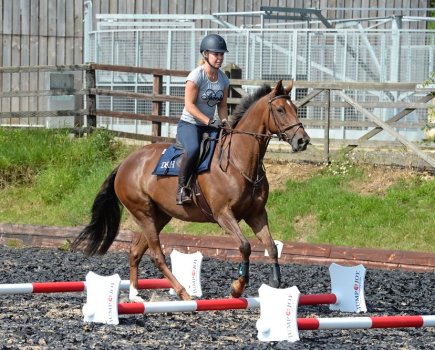An effective give and retake of the reins in a dressage test or when you are schooling your horse on the flat demonstrates that your horse is in good self-carriage. In other words, they are able to hold themselves upright and maintain an outline without relying on you, the rider, to prop them up.
Self-carriage is something that all dressage judges want to see but, like all movements, it’s something you need to practise at home in order to achieve the best marks.
When a horse isn’t in self-carriage and you give and retake the reins, they will lose their rhythm, balance and outline. That might mean their head and neck going up or down, falling on to the forehand, and when you take back the reins they will feel heavy in your hand due to the loss of balance.
A good give and retake
The ideal give-and-retake of the reins in dressage is short and sweet, lasting only two or three strides, and is ridden at trot or canter.
During these crucial steps, you must demonstrate a clear break in the contact, signified by a looped rein, to show there is no connection between your hands and the bit.
While the contact is broken, nothing must change about your horse’s rhythm, balance and frame.
“When releasing the contact, I see a lot of riders panic and thrust their hands up towards the horse’s ears. However, this rarely demonstrates the break in contact the judge is looking for,” explains international dressage rider and UKCC Level 3 coach Sarah Higgins.
“Getting it right is simple. All you need to do is make sure you offer your hand forward in line with the bit to create that loose, looped rein. Just straightening your arm is enough to achieve this, and it’ll become second nature with practice
Breaking into trot
If the horse breaks into trot when you give and retake the reins in canter, they are likely unbalanced and leaning on you, so they feel heavy in your hands (a bit like you’re trying to hold their head up).
When you’re doing give and retake in trot, you’re probably also experiencing rushing when you give with the rein.
“You won’t fix balance overnight, but a good starting point is encouraging your horse to be more responsive to your seat and less reliant on your rein aids,” says Sarah.
“To get started, add more transitions — especially between gaits, such as working trot to medium trot and vice versa — and focus on closing down your horse’s stride length by stilling your seat rather than by pulling on the reins.
“You can also use give and retake as a training tool to encourage your horse to find their own balance.
“If you feel your horse is heavy on the end of your reins, give them for a few strides. Your horse will soon learn that they can’t reliably lean on you and will have to work out how to carry themselves.”
If the horse switches off
The trick to maintaining rhythm and forwardness throughout any dressage movement, including give and retake of the reins, is preparation. This helps keep your horse focused, active and motivated.
“The same is true of give and retake and, especially if your horse is a lazier sort, I find that performing half-halts with your seat from 10 or even 15 metres before you begin the movement helps keep horses sharp and engaged. This means they maintain their rhythm and balance more effectively,” advises Sarah.
Hollowing in the contact
Give and retake in a dressage test often takes place on a circle, and circles by their very nature ask your horse for enhanced flexion and softness.
But, if they are still losing their frame, Sarah suggests offering one rein forward at a time instead of both at once.
“Suddenly losing the contact entirely could be a bit surprising, particularly if your horse is young, so introducing them to give and retake gradually in this way, offering extra support, will help,” she explains.
“Establish a rhythm and bend you’re happy with, then give with the inside rein while using your outside rein to keep them balanced and soft. Then retake the rein and repeat the other side.”







